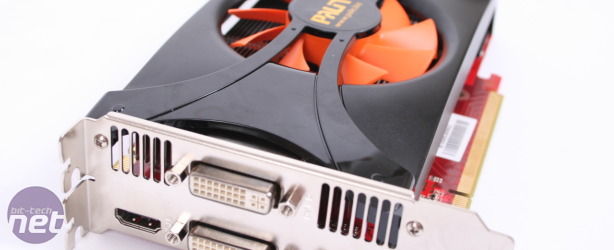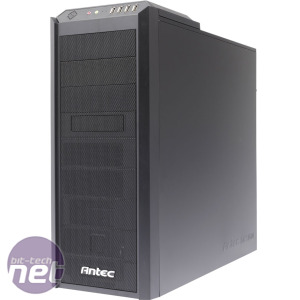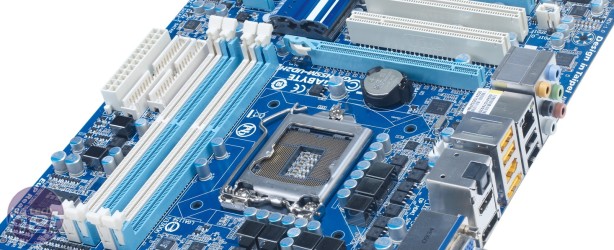PC Hardware Buyer's Guide May 2011
May 10, 2011 | 13:17

Affordable All-Rounder May 2011
This system is designed to be our recommendation for those looking for maximum performance per pound (we’re British, y’know). The power of a fast dual-core processor is still perfectly adequate for everyday use and gaming – add a decent amount of memory and as potent a graphics card as you can afford, and you’ll be fine for the foreseeable future on a 1,680 x 1,050 screen.| Affordable All-Rounder | |||
| Product | UK Price (inc VAT) | US Price (ex tax) | |
| CPU | Intel Pentium G6950 2.8GHz | £70 | $100 |
| Motherboard | Gigabyte GA-H55M-UD2H | £70 | $95 |
| Memory | 4GB 1,600MHz DDR3 | £40 | $45 |
| Graphics Card | Nvidia GeForce GTX 460 1GB | £130 | $155 |
| PSU | Corsair SU-430CX 430W | £35 | $45 |
| CPU Cooler | Arctic Cooling Freezer 7 Pro | £15 | $30 |
| Case | Antec One Hundred | £40 | $65 |
| Optical drive | SATA DVD-RW | £15 | $20 |
| Storage | 1TB SATA 3Gbps | £30 | $60 |
| Overall Price: | £445 | $605 | |
New This Month
This month we’ve upgraded the graphics card in our affordable all-rounder rig to the 1GB version of the Nvidia GTX 460. These cards are ludicrously cheap at the moment, and they're more than capable of running modern games on modestly sized monitors. They're also very overclockable, meaning you can either have a tinker around yourself, or plump for a pre-overclocked version, if you feel you may need a little extra graphical grunt.Some may argue that we’d be better off including the ATI Radeon HD 6850 1GB, but these cards currently retail for £20 or so more than most GTX 460 1GB cards and including one pushed our total price up just a little too high for our tastes. If, however, you do have closer to £500 to spend, then you’ve got our blessing to swap the green card out for the red one if you wish.

We’ve also chosen to upgrade the memory in the build to 1,600MHz RAM, as this has dropped in price to the degree that there are only a few pounds between the new memory and the 1,333MHz sticks it replaces. Using the faster DIMMs will provide slightly more flexibility when overclocking and improve performance in memory-intensive tasks, such as the image-editing portion of our Media Benchmarks.
It’s also easy to get the best out of 1,600MHz memory as 1,600 is an easily divisible number that fits well with a base clock of 200MHz. This means, for example, that you can run with a base clock of 200MHz and a CPU multiplier of 20 to a satisfactorily round 4GHz overclock (200 x 20 = 4,000) – the H55M-UD2H then has an 8x memory strap, which you can use to keep the memory running at its rated speed of 1,600MHz (200 x 8 = 1,600).
We’ve also decided to bump up the size of the hard disk in the build. This isn’t because 500GB suddenly became inadequate, but simply because the price of 1TB disks has dropped so low recently - you can pick up a 1TB for as little as £30 these days so you may as well opt for the extra storage.
And The Rest
 Nestled at the heart of our trusty affordable all-rounder build is the biblically overclockable Pentium G6950. This CPU is a little powerhouse when pushed, and its small amount of cache and relatively simple design mean you should easily be able to get the chip up to 4GHz without a hitch. At these speeds it makes mincemeat of similarly priced CPUs, and tears through our media benchmarks to boot.
Nestled at the heart of our trusty affordable all-rounder build is the biblically overclockable Pentium G6950. This CPU is a little powerhouse when pushed, and its small amount of cache and relatively simple design mean you should easily be able to get the chip up to 4GHz without a hitch. At these speeds it makes mincemeat of similarly priced CPUs, and tears through our media benchmarks to boot.There are, of course, a number of other options available at this competitive end of the market. Most interesting is Intel’s new i3 LGA1155 processors which, if the other LGA1155 processors are an accurate yardstick, should be fantastic for the money. Unfortunately, we’re yet to test one of these CPUs (although there is one in our labs right now, so expect the review soon), so we can't solidly recommend one over the G6950 quite yet.
This also goes for the AMD route. We’re aware that there are plenty of good value AMD CPUs at this end of the market, such as the Phenom II X2 555 and the Phenom II X4 840, but we simply haven’t tested any budget motherboards that support these chips. The MSI 870-C45 has been pointed out to us, and it's the successor to the excellent 770-C45 we used to recommend, but as we’ve not tested it firsthand we can’t in good conscience suggest you go out and splash your hard earned cash on it.
Housing the G6950 is the Gigabyte GA-H55M-UD2H, which is a small, tidy board that proved itself to be a competent overclocker during our testing. Its maximum base clock of 205MHz should, when coupled with the 21x CPU multiplier of the G6950, give you the potential to hit a heady 4.3GHz maximum CPU overclock, which is nothing to sniff at from a system that tips the scales at just over £400. The board also supplies an ample five SATA 3Gbps ports for later expansion, and an extra 16x PCI-E slot.
Our affordable all-rounder build is housed in the excellent Antec One Hundred case. You’re not going to get an all-singing, all-dancing extravaganza of a case for this money, but the One Hundred offers a solid chassis with good cooling and clean and tidy looks which, for £40, is a bargain.

We played with the idea of using the reference CPU cooler for this system to keep the price down, but given that we wanted to overclock the CPU we decided to buy a better performing third-party cooler after all. The Arctic Cooling Freezer 7 Pro is cheap and quiet and has three heatpipes to cope with a spot of overvolting and overclocking.
Powering the build is the small but capable Corsair SU-430CX 430W PSU. This is the replacement for the Corsair CX400 that used to occupy this spot, but it retails for the same price and the extra 30W provides a little bit of extra headroom for all the overvolting the system should need.
If you haven't got a copy already, you might want to factor in a copy of Windows 7. If you're confident that you won't be upgrading your motherboard, then an OEM copy should be fine, but serial upgraders need the pricier retail version. Finally, we’ve added the cheapest DVD-RW drive we could find.

MSI MPG Velox 100R Chassis Review
October 14 2021 | 15:04








Want to comment? Please log in.